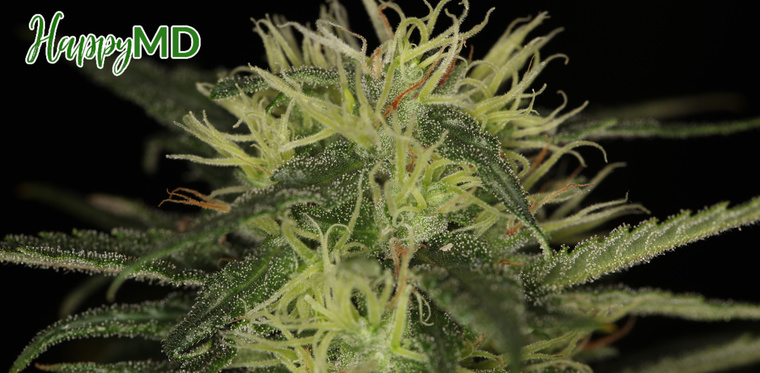
How to Bridge Medical Cannabis Knowledge Gaps
Most patients and physicians have always been unsure of the perfect approach to cannabinoids or medical marijuana to discuss it as one of the pain management strategies when having your clinic visits. While most doctors believe marijuana is a legitimate medicinal therapy, a survey shows that some primary care doctors aren't yet ready to use it or didn’t answer patients' questions on the matter.
With the numerous concerns about opioid overprescription and efforts to reduce the misuse, overdose, and abuse of these drugs, patients and physicians are looking for alternative treatments or therapies for managing severe pains and other symptoms. The World Health Organization in February 2019 proposed rescheduling marijuana within international law. The main aim of the proposal was to recognize the vast evidence of the drug for different medical applications. Furthermore, the organization was reversing its stand on cannabis which it had held for more than 60 years, as not being a legitimate medical drug.
Despite this move, numerous knowledge gaps exist on medical marijuana use. The gaps include how the endocannabinoid system works in the body. The Endocannabinoid system is a group of naturally synthesized compounds that activate similar receptors like the THC with psychoactive properties. The other gaps include understanding the medical benefits of marijuana for different medical conditions, delivery methods, and optimal dosing. Lastly, a huge gap exists in the drug's potential interactions, toxicities, side effects, and long-term use.
The questions become numerous and urgent, making the National Academies of Sciences, Engineering, and Medicine undertake a comprehensive review. The review is on the latest medical literature on cannabis and cannabinoids’ health effects, focusing on 11 areas, including cancer incidence, therapeutic effects, cardio-metabolic, problematic marijuana use, injury & death, and respiratory disease. These researchers identified and prioritized various gaps and barriers limiting the research. Furthermore, the gaps still exist as doctors don’t learn about cannabinoids in schools. Despite the growing professional certificates and continuing education courses, these options still lack a basic clinical curriculum. Another survey shows more than two-thirds of medical institution deans said that the graduates aren't ready to recommend or prescribe medical cannabis. At the same time, a quarter said the graduate doctors were not ready to respond to questions on this topic.
Thus, how should patients raise the subject of medical cannabis use to alleviate pain and related symptoms, like disturbed sleep or anxiety? Below are some effective recommendations:
Be honest and straightforward with your physician about your need to try opioid alternatives like medical cannabis to open new therapies to alleviate your severe pain.
Be Updated with the Latest Cannabis Research for Pain
You start with homework or research to get evidence of individuals using medical marijuana for pain management. It’ll be wise to understand the different types of pain. You also develop knowledge of the cannabis components, such as THC and CBD. Check how the drug (marijuana) affects the body and the medical marijuana forms available (hemp and cannabis).
Dr. David Bearman recommends that you print the finding and show it to your doctor before starting the conversation after the research. This doctor has more than 50 years of specialization in pain management, substance abuse prevention, and treatment. Furthermore, he is the vice president of credential and quality assurance at ‘The American Academy of Cannabinoid Medicine.’ After having the printout, ask if marijuana will be a better option. Suppose the doctor is unable or unwilling to discuss this pain management alternative. In that case, Dr. Bearman advises that you seek for referral to a local clinic or physician specializing in medical marijuana treatment.
Share Your Experience with Cannabis
The recent PPM poll showed that more than half of the respondents had tried medical cannabis to relieve severe pains and related symptoms. Share by providing your experience, explaining if the treatment helped, the amount and form you used. Besides the transparency helping the physician understand your experience, it’ll also help them evaluate the harms and risks of medical cannabis based on your full health picture, including the other drugs like opioids.
Continue with Caution
You proceed with the treatment, but you must be vigilant, as studies are still ongoing for the CBD and THC safety and efficacy. Few studies associated cannabis use with more hypertension deaths, respiratory issues, and high acute ischemic stroke risks. Furthermore, some surveys point to the continuous use of marijuana as increasing moods and psychotic disorders. Lastly, a link exists between cannabis use and the development of abuse disorders or substance dependence on other substances, like illicit drugs, tobacco, and alcohol.
Bridging the gaps in medical marijuana treatment will be vital to enjoying this pain management alternative and understanding potential adverse effects. You can visit HappyMD to get more details on medical cannabis and have a straightforward process of applying for the medical marijuana card.


.png)